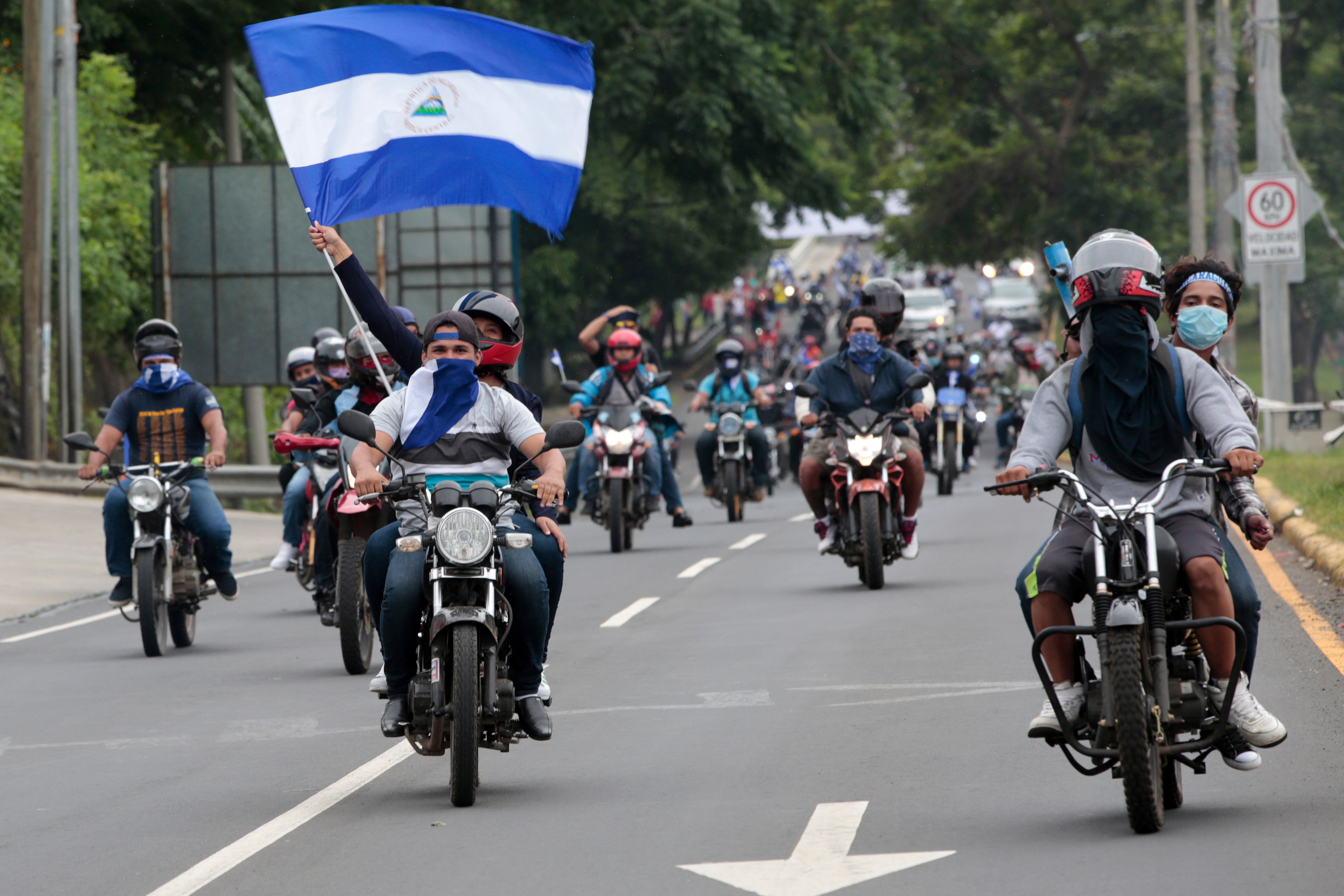July 17, 2018
Over the past several months the tiny Central American nation of Nicaragua has been rocked by some of the worst political violence the region has seen in decades.
The unrest began in April when President Daniel Ortega’s government cracked down on protests against an unpopular pension reform. Hundreds have been killed since. On Saturday, two more died as government-backed paramilitaries laid siege to a church complex in the capital city of Managua where students, priests, and journalists had taken refuge. Thirteen countries in Latin America have condemned the Ortega government’s actions.
President Ortega is one of the region’s wiliest political survivors. He first took power in 1979, leading a revolution by the Marxist-Leninist Sandinista Liberation Front, which prompted a decade-long, ruinous civil war against US-backed right-wing paramilitaries.He stepped down after losing elections in 1990. But after reinventing himself as a milder sort of socialist with a business-friendly streak and more piously Catholic outlook, Ortega won the presidency in 2006 and has consolidated power ever since: abolishing constitutional term limits, appointing his wife as vice president, and handing immense media power to his children.
Ortega claims he and his wife are merely keeping order against a US-backed attempt to overthrow his government. But as a detached, nepotistic ruler cracking down on journalists and students, he has prompted protest chants that compare him with Anastasio Somoza, the man he overthrew nearly 40 years ago.
Is Ortega too on his way out? As Venezuela’s Nicolas Maduro (whom Ortega has cultivated ties with) has shown to chilling effect, rulers can stay in power for a long time so long as the men with guns stay on side.
But an increasingly bloody standoff in Nicaragua could have repercussions across the region. In contrast to the so-called “Northern Triangle” countries of Guatemala, Honduras, and El Salvador, where the governments’ inability to provide even basic security has caused homicide rates to soar and prompted hundreds of thousands of asylum seekers to head north, Nicaragua has enjoyed relative stability in recent years. As the crisis there deepens, that relative calm could fade fast, putting increasing pressure on Nicaragua’s northern neighbors.
More For You
Global conflict was at a record high in 2025, will 2026 be more peaceful? Ian Bremmer talks with CNN’s Clarissa Ward and Comfort Ero of the International Crisis Group on the GZERO World Podcast.
Most Popular
Think you know what's going on around the world? Here's your chance to prove it.
Indian Prime Minister Narendra Modi isn’t necessarily known as the greatest friend of Muslim people, yet his own government is now seeking to build bridges with Afghanistan’s Islamist leaders, the Taliban.
French President Emmanuel Macron, German Chancellor Friedrich Merz, Ukrainian President Volodymyr Zelenskiy, U.S. Special Envoy Steve Witkoff and businessman Jared Kushner, along with NATO Secretary-General Mark Rutte and otherEuropean leaders, pose for a group photo at the Chancellery in Berlin, Germany, December 15, 2025.
Kay Nietfeld/Pool via REUTERS
The European Union just pulled off something that, a year ago, seemed politically impossible: it froze $247 billion in Russian central bank assets indefinitely, stripping the Kremlin of one of its most reliable pressure points.
© 2025 GZERO Media. All Rights Reserved | A Eurasia Group media company.
